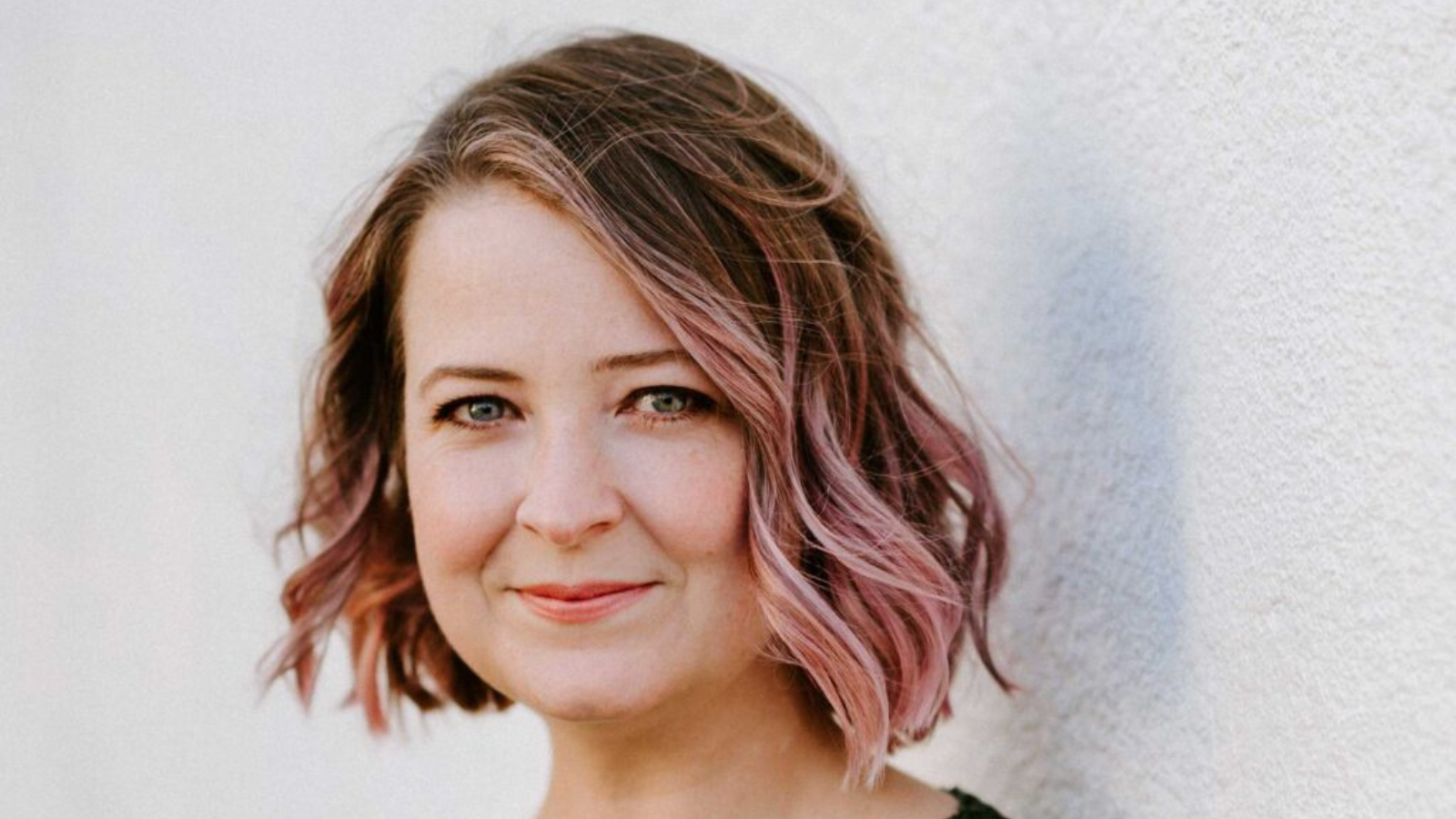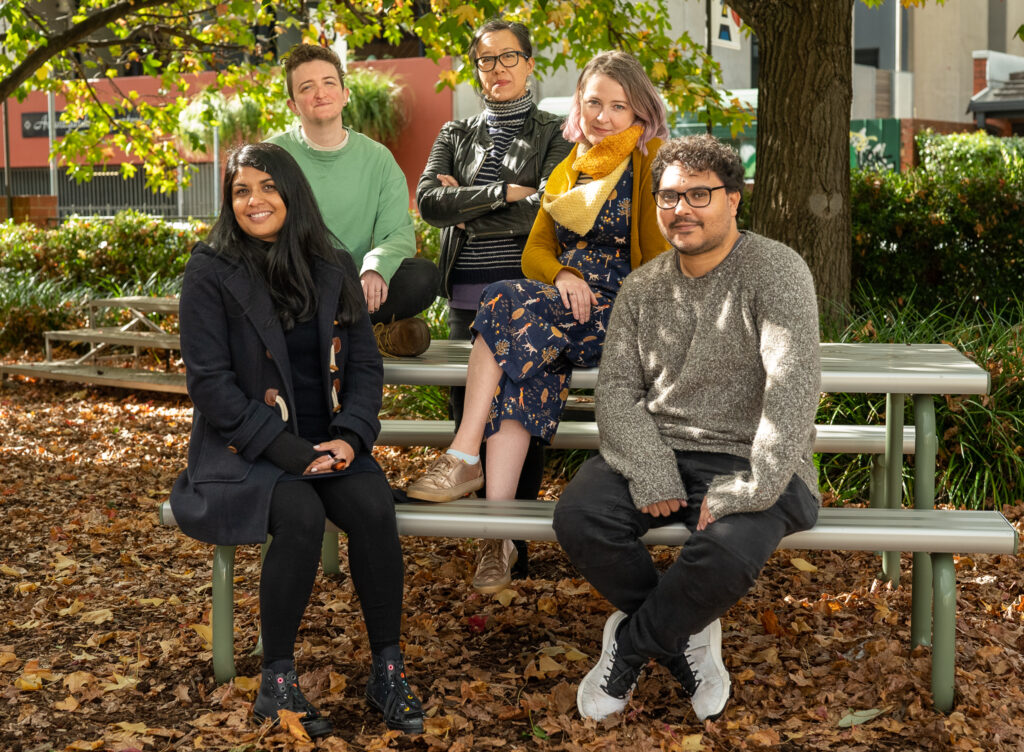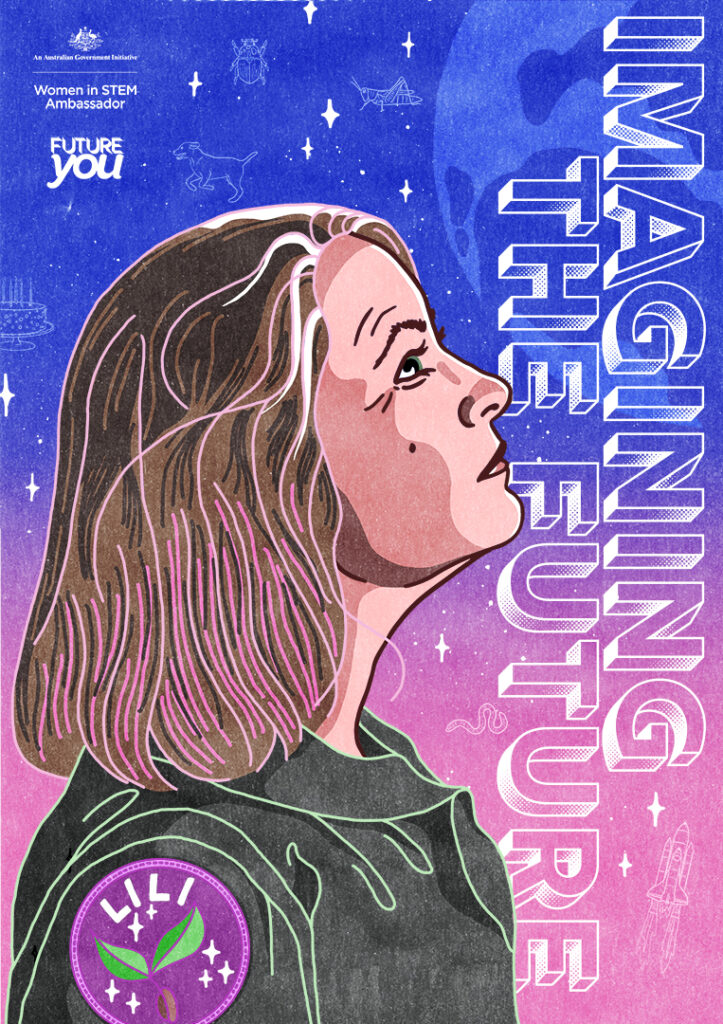A new government initiative is harnessing the power of stories to connect children with STEM. Award winning Young Adult author Lili Wilkinson tells us more about the Imagining the Future program and why a diversity of experiences and opinions is key to building a more inclusive future.

What is Imagining the Future?
Imagining the Future is the New Fiction strand of Future You, a major government initiative designed to get mid- to upper-primary children excited about working in STEM.
Imagining the Future presents five speculative stories set in a shared future storyworld. The interlinked narratives, which will be available as texts and dramatised podcasts, feature diverse protagonists grappling with future societal and environmental challenges.
I’ve been working with an awesome group of leading Young Adult writers – Rebecca Lim, Alison Evans, Gary Lonesborough and Melissa Keil – to map out this future and the stories, which are aimed at 10- to 12-year-olds.
The program taps into children’s love of storytelling, innate creativity and empathy, and invites them to imagine their place in the future alongside our characters, and to speculate on solutions to the problems the world (and other worlds!) will face.
How were the stories developed?
The five authors, plus Future You producer Dan Prichard and our brilliant editor Kate Whitfield, spent a day in Melbourne workshopping the scenario for our stories. We agreed we wanted our future to be a positive one – no bleak dystopian nightmares, thank you! Our future is inclusive, diverse and kind, and one where we are well on the way to solving the problems of climate change.
We were all drawn to the idea of space exploration – I mean, who isn’t? – so we came up with the idea of all the stories being about the establishment of a human outpost on Callisto (Jupiter’s second largest moon), with each story taking place at a different point on a timeline.

What are some of the themes of the stories?
The stories are about hope for the future, as well as young women, non-binary and diverse young people solving problems using STEM. My story is the first one in the series and is about a fourteen-year-old girl leaving Earth with her family to be the first ones to arrive on Callisto and set up the outpost. Other stories feature characters learning to understand Callisto using traditional cultural knowledge from Earth and creating a holistic, non-destructive relationship with their new home. Like all good stories, our protagonists make mistakes, but then learn to fix them.
What attracted you to the project?
At school, I was terrible at maths and science. I had plenty of teachers who encouraged my skills in English, Drama and other humanities subjects, but I got the impression that when it came to STEM, I was basically a write-off. However, I really liked the ideas in the STEM subjects, even if I couldn’t wrap my head around the technicalities of them. Looking back now, I wonder how things might have been if STEM had been framed a little more positively.
Everyone knows the story of when NASA tried to send Sally Ride into space with 100 tampons for a one-week trip. It’s funny, because … men, amirite? But there’s an important lesson to be learned there. When only half of our population is involved in imagining the future – with further barriers thrown up due to ethnicity, LGBTQIA+, identity, disability, geography and educational background – we get a future that isn’t inclusive, a future that isn’t for everybody. We need everyone, everywhere to be able to think STEM could be for them, and this project is a great way to introduce that idea to young people.
How can schools, libraries and individuals get involved?
Imagining the Future will be providing a suite of resources that are great for use in schools and in the library. There will be a set of posters featuring the writers created by the incredible Cassandre Collins. The stories themselves will be available digitally as both text and podcast.
Young people and schools can be directly involved in the program by writing and drawing the future themselves. As part of the program, Future You will be launching a nationwide fiction writing competition, inviting teenagers and adults to write short stories for 10- to 12-year-olds underpinned by STEM thinking, and that can sit alongside our stories. Ten of these stories will feature on the Future You website and in an e-book – and there are cash prizes too!
In 2023 we will also be launching a graphic art competition inviting Australia’s young graphic artists to create works based on the new stories. The winning entries will be published alongside the curated stories in the e-book, accompanied by dramatised readings of the stories, all of which will be available for download from the Future You website. Full details of the competitions will be announced on the website, so sign up now to get them as soon as they are announced.

You are a leading writer of YA and speculative fiction. Why does this genre and this audience appeal?
I love teenagers. I love their enthusiasm and idealism, and their strong sense of justice. Teens are clear-eyed and passionate about what they believe in, and about creating a beautiful, kind future. Adolescence is also a time of firsts – the first time you fall in love, have your heart broken, or get a glimpse of the person you really want to be. And speculative fiction is also often about firsts – new discoveries, and journeys into the unknown.
Storytelling is all about the question ‘what if?’, and the speculative arena is where you find the most fascinating answers. For me, speculative fiction is a way of thinking about our world here and now, and exploring ideas about identity, society and politics, away from the complex messiness and biases of our current reality.
This interview was originally published in the Schools Catalogue Information Service (SCIS) magazine, Connections issue 122.
As part of our Wheeler Education program, Lili Wilkinson will appear in Teens Talk…Future You on Wednesday, September 14. This event is presented in partnership with the Future You program, an initiative of the Women in STEM Ambassador. Book your tickets for the in-person event or the live stream now.
A limited number of writing workshops are also available for schools in which students will be guided through exercises to help them imagine their own futures. Contact Bec Kavanagh, Youth Programming Manager, to find out how to take part in these workshops: bec.kavanagh@wheelercentre.com.
Related Posts

Read
Anne-Marie Te Whiu Receives The Next Chapter Alumni Poetry Fellowship
2 Apr 2024

Read
What's on in April: Resident Organisation Round Up
28 Mar 2024

Read
Blak & Bright First Nations Literary Festival returns in 2024
7 Mar 2024

Read
What's on in March: Resident Organisation Round Up
29 Feb 2024

Read
Hot Desk Extract: International
23 Feb 2024

Read
Hot Desk Extract: The Rooms
23 Feb 2024
Share this content